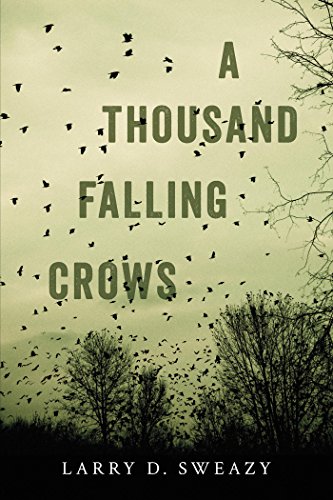A Thousand Falling Crows
The summer of 1933 comes hard to the scorched plains of north Texas. Widowed Ranger Sonny Burton must retire after losing his right arm from wounds received in a gun battle with Bonnie and Clyde. He struggles with everything: putting on a shirt, driving a truck, whether to keep living or end it now.
Sonny delays that final decision to get groceries, and life takes over. A summer squall adds driving challenges and keeps others off the road. Sonny is the only witness to a grocery store robbery and the murder of the clerk. On the way home, Sonny runs into a homeless dog. He ponders putting the dog out of its misery, but he can’t. Sonny gets help for the dog’s broken leg and takes it home. The hospital janitor Sonny had befriended asks Sonny to find his 16-year-old daughter, who had run away from home. Badly beaten bodies of Jane Doe young girls show up, dumped in the grass stubble.
Sweazy adds to the darkness by weaving in how crows see these things. They are happy. “For now there was a bounty of dead things to feed on.” Theirs is not to warn or judge. Theirs is only to watch and wait and then take what they can to thrive.
The portrayal of Sonny is gripping and makes the reader think of how one copes with loss, loneliness, and life’s waning. The resolutions of the multiple murders and the janitor’s run-away daughter, however, are a bit too brief and convenient. This short novel deserves to be longer or the first in a series.










